Ancient CHamoru/Chamorro Medicine Making
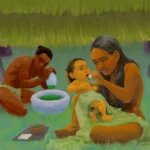
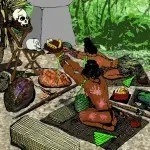
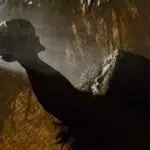
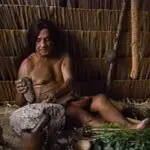
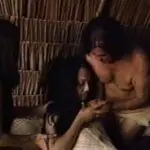
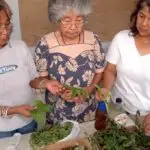
Table of Contents
Share This
Health and wellness
Because of the biological nature of our bodies, people get sick, and people die. Illness and death are a part of life. However, people are not just physical beings—our complex cultures separate us from other living organisms. As people, we try to make sense of natural phenomena like illness and death in terms that we can understand. We rely on culture to tell us what is death, why people get sick, and how to deal with other health-related issues. Our culture also tells us what are the appropriate responses and treatments to heal our bodies or to make us feel better.
In anthropology, the term ethnomedicine refers to the beliefs, knowledge and practices of a culture group that relate to health. Researchers who study ethnomedicine examine how different cultures understand the notion of health and the causes of illness. They also look at the different treatments or cures for physical, and even mental, ailments used by the health practitioners of a particular culture group.
Regarding health, many cultures traditionally believe that a healthy individual is one whose body is in balance or in equilibrium (for example, a balance between hot and cold, or wet and dry properties) and that illness occurs when something upsets that balance. Sometimes, the cause may be seen as supernatural—a curse or punishment by some angry god or spirit. Some groups have full-time specialists for examining or treating health-related issues, while other groups may rely on individuals who treat others on a part-time basis. Often, a variety of plants are gathered and processed to produce medicines. Also, a spiritual component of treatment, which may include special ceremonies or chanting, may be utilized. All of these comprise the ethnomedicine of a particular group, and so the medical practices and beliefs utilized by them are rooted in the culture of that group.
Much of what we know of traditional CHamoru/Chamorro medical practices is from accounts by early European explorers and missionaries. The ancient CHamorus had specialists known as makåna that treated illnesses, but who also dealt with other matters between earth and the spiritual realm. These individuals were trained in the use of medicinal plants and had techniques for healing or easing pain. There were also kakåhna, who could manipulate spirits for malevolent or evil purposes. Although the introduction of Catholicism and Spanish colonization effectively eradicated the makåna and kakåhna of the ancient CHamoru culture, amazingly, the knowledge and practice of traditional healing survived, maintained today by modern CHamoru practitioners known as suruhåna. It is conceivable, therefore, that by looking at present day suruhana/-u we can learn something about the training and skill used by traditional healers of ancient times.
| Chant | |
|---|---|
| CHamoru | Guello yan Guella, kao siña mañuli’ yu’ tinanum-mu ya yanggen måtto hao gi tano’-hu chule’ ha’ hafa malago’-mu? |
| English Meaning | Ancestors, I respectfully ask permission to gather some of your plants and if you should come to my place, please take whatever you need. |
Use of natural medicines was an important part of life in pre-contact Marianas. Early researchers have also written striking observations about how the use of herbal medicine has persisted through hundreds of years even with many and different contacts with the outside world. CHamorus depended on the traditional healers to help with their ailments. In fact, traditional medicine and healing continues as an established knowledge and a cultural practice in the Marianas and throughout the Micronesian region.
Overall, CHamorus were a robust people who enjoyed good health. Archeological and ethnohistoric records discuss certain endemic diseases such as yaws, arthritis and anemia which some CHamorus suffered from as well as other chronic health problems as a result of famine and dental disease.
Traditional healers
Ancestral worship is one aspect of early Austronesian cultures that is commonly practiced throughout the Pacific. In late prehistoric times, CHamorus practiced ancestral worship of carefully curated skulls of their deceased relatives (mananiti). Ancestral skulls were kept in a high place in their house and were respectfully acknowledged with a bow. There appeared to be no other symbols, objects or facilities associated with CHamoru traditional beliefs of the spirit world.
Traditional healers in most cultures, sometimes called shaman (makåhna), in addition to sorcerers (kakåhna), medicine men and herbalists (suruhånu), ministered to the ills of their society and the well-being of the inhabitants.
Ancient CHamorus called upon the makåhna and kakåhna who were believed to possess the powers to cause or cure illness by calling upon the mananiti (singular aniti) spirits of the ancestors. They implored upon supernatural powers to heal illnesses, but also to foresee future events, bring rain, allow good fishing, and take away problems.
With the implementation of Christianity and the breakdown of CHamoru traditions, the makåhna/kakåhna who once played important roles in the lives of the CHamorus lost considerable influence. The people were instructed in the Catholic faith, their children were baptized and they were led to believe that some of their traditional practices, such as ancestral worship, were no longer good practices. Although the makahna/kakahna did not survive in CHamoru culture, the most intact survival of pre-contact CHamoru is the herb doctor or suruhåno/suruhåna.
When the ancient CHamoru became sick, their ailments could be cured with the use of herbal medicines (åmot) prepared by themselves or traditional medicine healers called siruanu/suruhånos (male) and suruhånas (female). These terms derive from the Spanish word cirujano which means surgeon or doctor. French explorer Louis Claude de Freycinet stated that traditional healers were called eamtis (yo’amte) and most were women.
Eåmtis (suruhåna)
By looking at modern suruhano and suruhana, we can get a glimpse of how individuals train to become traditional healers. Not everyone could become a suruhåna and in many cases, the gift of being a suruhåna was passed through the family line from generation to generation. The chosen one, at a very young age, was an apprentice to his mother, father or other extended family member who held the knowledge of medicine-making. In some cases, a person who was not related but who had a strong interest in medicine making learned from one of the village traditional healers.
The suruhåna’s “classroom” for their apprentices was the natural environment, while the home was the “hospital.” At a young age, an apprentice foraged the jungle with the suruhåna gathering herbal plants that were needed. From many lessons, the apprentice learned the names of the plants, the places (or medicinal landscapes) where they were abundant, when they could be picked, and the types of illnesses that they would heal. At a later stage, with enough experience, the apprentice would be sent to gather some of the herbal plants alone. The suruhåna kept the most essential medicinal herbs as secret knowledge until it was an appropriate time to pass that knowledge on to the new suruhåna. The apprentice learned by observing, working along with the suruhåna, practicing under guidance, and then finally practicing alone. Suruhåna also taught their apprentices respect for the spirit of the taotaomo’na (literally, “people before us”) who they believed guided success in their healing practices.
Every village had at least three recognized suruhånas who were specialists in areas similar to doctors of the present times. For example, some suruhånas were skilled in medicine for babies and women while others specialized in healing taotaomo’na illnesses or ailments such as the common ailments of cold, muscle aches, and skin problems. These traditional healers were herb doctors, chiropractors and masseurs all wrapped into one.
Integrated system of curing
According to anthropological research of CHamoru traditional healers an integrated system of curing that is practiced today is probably similar to the system used in pre-contact times. This integrated system included four facets:
- use of medicinal plants
- massage
- application of body lotion (pålai) and/or
- dietary advice (madieta)
Each facet had a separate methodology and all were considered essential in the system of curing.
1. Use of medicinal plants
Studies of the kinds of plants used by CHamoru healers include plants for treating fevers, colds, headaches, blood circulation, skin diseases, baby illnesses, women and taotaomo’na illnesses among many other ailments. These plants, still found in the jungles of the Mariana Islands, are the same plants that have been used and passed down through oral traditions.
In addition, early researchers have written about the use of prayers, chants, and beliefs in the supernatural at all stages of the healing process. Respect for nature and the spirits is of the land is demonstrated through the healers’ chants and other actions, such as requesting entry into the jungle before gathering or using medicinal plants and tools and for guidance in healing a sick person.
The suruhåna used a system for gathering plants. Having met the sick person and learning the reason for their visit to his home, the suruhåna would determine the illness and subsequently plan when and where he would go to gather medicinal plants. If necessary, he might travel long distances or spend an entire day searching for plants that only grew on the coastal, inland, or mountainous areas of Guam. For example, suruhåno Emilio Ayuyu describes how he typically begins gathering plants in the early morning hours and ends at 3 pm, or before sunset. Plant gathering stops at this time out of respect because this is the time when the taotaomona are most active.
Once gathered, each plant was cleaned, washed and left to dry in preparation for medicine making, which could occur within a few hours or the following day. For medicine preparation, specific parts of the plants were pounded and then boiled, and then either drunk by the patient, or applied using medicinal tools. Herbs were applied externally to the injured parts, but the sick person also drank the juice mixed with powdered ginger, which was commonly mixed with all herbal medicines.
Tools that may have been used in medicine preparation have been found, some of these dating to the Latte Phase of Marianas Prehistory. These include stone and shell adzes, stone mortars (lusong) and dishes, pestles (lommok) and pounders of stone, fishhooks of shell and bone, spear points and many other items of stone, bone and shell. Stone mortars and pestles are the most recognized ancient tools for the preparation of medicine. Evidence of other artifacts found in Latte sites such as pottery vases and the presence of fire would have also been used in the preparation of medicine.
2. Massage
Although there is no historical account that describes the use of massage by ancient CHamoru healers, it is considered an important component of the modern suruhåna’s healing techniques. The suruhåna would massage a person with vigorous pounding (matantan) or a lighter touch (malasa) to dislodge air bubbles and blood clots that are formed inside the body. It was believed that hot swelling (pukpuk maipe) caused by air bubbles and blood clots occur naturally or were a result of spirits, such as taotaomo’na. Concentrated massage would be applied to areas of strong pain and swelling.
3. Application of body lotion (pålai)
Suruhåna also believed that ailments such as Pukpuk maipe (hot swelling) or even mental illness (atmariao) could be caused by the taotaomo’na spirit. The CHamorus believe any disrespect to the land, sea, sky and other spiritual places can anger the taotaomo’na. These kinds of ailments required application of body lotions (pålai) such as coconut oil (lañan niyok), lime, ilangilang (a fragrant flower) and other lotions that were massaged onto the body to promote healing.
4. Dietary advice (madieta)
Finally, the patient would receive dietary advice. The suruhåna would give advice about the types of foods to eat and herbs to drink for better health.
Looking forward
It is somewhat ironic that what kept the native healing practices going in the past was the protection that it received from the indigenous population…
Directory of Traditional Healers
Ancient CHamoru healing knowledge and practices are still being used today, in spite of all the disasters, wars and attempts to disrupt the cultural activities of the CHamoru people. These practices have been maintained and passed through oral traditions by the CHamoru population.
Today’s generation of CHamorus throughout the Mariana Islands have kept the traditional knowledge of medicine making alive through a renewed interest and sharing with CHamoru families and interested people of the Marianas. Interviews with surhånos and surhånas throughout the Marianas has led to a compilation of medicinal knowledge in books, videotapes, compact discs and websites for future generations. A contemporary group of community-recognized suruhånos and suruhånas have led training sessions and conferences on traditional medicine and practices. Present day suruhånas practice traditional herbal medicine making and healing alongside medical doctors and continue to fill a niche in Guam’s sources of health care services.
Protecting native traditional knowledge and practices now means sharing the information with the world.
Editor’s note: Research for this entry was conducted in part by University of Guam ED 265: Culture and Education Undergraduate Students: Thilda Chamness, Melissa Tayama, Naomi Uy, Georgina Cruz, Faith San Nicolas, Rema Faith Olaguera, and Michael Argenal, under the direction of professor Marilyn C. Salas, PhD.
Did you know?
CHamoru Health – Archeological studies reveal that, aside from diseases and chronic health problems, ancient CHamorus also suffered traumatic injuries, like broken bones, many of which eventually healed. Men were in overall better health than women because of the kinds of hard labor women performed.
Makåna and Kakåhna – In anthropology, a shaman is an individual who is a part-time specialist involved in healing. A sorcerer is an individual who communicates with the supernatural in the belief that spirits can act on their behalf for the purpose of good or evil. Although these terms, in addition to “medicine men” and “herbalists” are sometimes used interchangeably, CHamorus did distinguish between their healers, known as makåna, and their sorcerers, or kakåhna, who manipulated spirits to do evil. The term suruhåna is believed to derive from the Spanish word cirujano and is the practitioner that emerged after Spanish colonization; in addition, a suruhåna may use a combination of traditional knowledge with Christian beliefs and practices.
Suruhånu/a – Unlike Spanish, CHamoru does not categorize nouns as either masculine or feminine. Because suruhåna is derived from the Spanish word cirujana, it is then assigned a gender, and made plural by adding an “-s.”
For further reading
Borja, Manuel F., and Jose S. Roppul. Lepblo pot Suruhåna/Suruhåno Siha yan Åmot Siha gi I Commonwealth i Sankattan na Islan Marianas (Directory of Traditional Healers and Medicinal Plants in the Commonwealth of the Northern Mariana Islands). Saipan: Inetnon Åmot/Ammwelil Safeyal Faluwasch, 2009.
Cunningham, Lawrence J. Ancient Chamorro Society. Honolulu: Bess Press, 1992.
McMakin, Patrick D. “The Suruhanos: Traditional Curers on the Island of Guam.” Micronesica 14, no. 1 (1978): 13-67.
Reinman, Fred. An Archaeological Survey and Preliminary Test Excavations on the Island of Guam, Mariana Islands, 1965-1966. Mangilao: Micronesian Area Research Center, University of Guam, 1977.
Russell, Scott. Tiempon I Manmofo’na: Ancient Chamorro Culture and History of the Northern Mariana Islands. Saipan: Commonwealth of the Northern Mariana Islands Division of Historic Preservation, 1998.
Safford, William E. The Useful Plants of Guam. Agana Heights: Guamology Publishing, 2009
Thompson, Laura M. Guam and Its People. With a Village Journal by Jesus C. Barcinas. 3rd ed. New Jersey: Princeton University Press, 1947.
Workman, Ann M., Linda Cruz Ortiz, and Debbie Kaminga-Quinata. “The Use of Traditional Medicine and Healers on Guam” In Science of Pacific Island Peoples: Fuana, Flora, Food and Medicine. Vol. 3. Edited by John Morrison, Paul Geraghty, and Linda Crowl. Suva: Institute of Pacific Studies, University of the South Pacific, 1994.
